I've had lots of blogs in the past, but this one I'm actualy excited to share with people.
68 posts
Latest Posts by lanas-own-blog - Page 2

Vela Supernova Remnant : The plane of our Milky Way Galaxy runs through this complex and beautiful skyscape. At the northwestern edge of the constellation Vela the telescopic frame is over 10 degrees wide, centered on the brightest glowing filaments of the Vela Supernova Remnant, an expanding debris cloud from the death explosion of a massive star. Light from the supernova explosion that created the Vela remnant reached Earth about 11,000 years ago. In addition to the shocked filaments of glowing gas, the cosmic catastrophe also left behind an incredibly dense, rotating stellar core, the Vela Pulsar. Some 800 light-years distant, the Vela remnant is likely embedded in a larger and older supernova remnant, the Gum Nebula via NASA
js

Milky Way over Bear Lake in Rocky Mountain National Park, CO
js
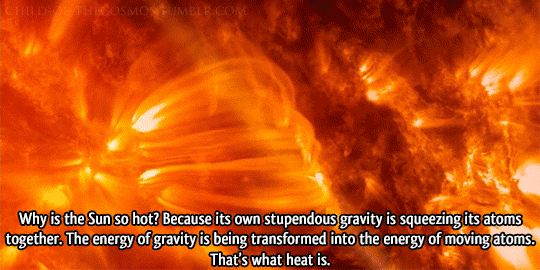

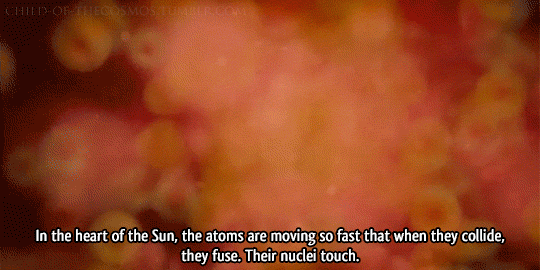
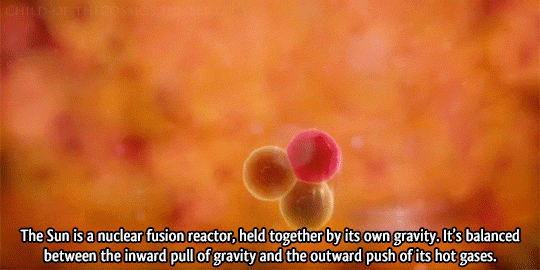
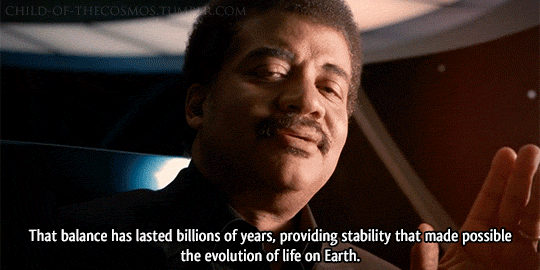
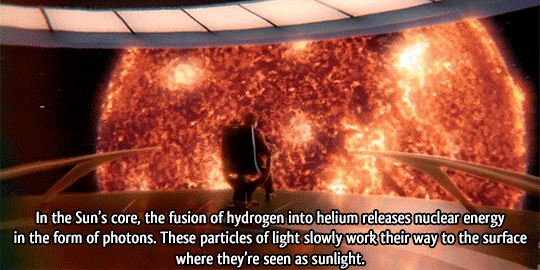
The Atom: Part 4 of 5 (Part 1, Part 2, Part 3) Episode 6: Deeper, Deeper, Deeper Still, Cosmos: A SpaceTime Odyssey






The Atom: Part 5 of 5 (Part 1, Part 2, Part 3, Part 4) Episode 6: Deeper, Deeper, Deeper Still, Cosmos: A SpaceTime Odyssey

Fill your void


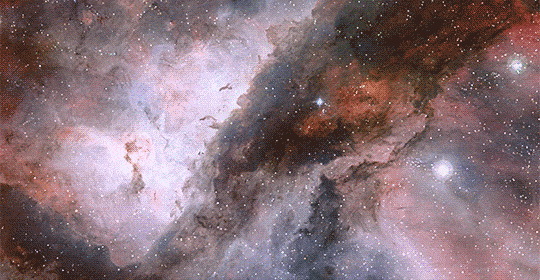

Flying Across The Universe Part 2 (From Top to Bottom: Cone Nebula, Omega Nebula, Carina Nebula, and Lupus 3)
(Part 1)
Credit: ESO.org









An Adaptable Species: Part 1 of 4 Episode 11: The Immortals, Cosmos: A SpaceTime Odyssey


NASA’s Message-In-A-Bottle: The Interstellar Constellation
The picture above represents one of the most beautiful things we’ve ever done.
Here’s a short thought experiment and story:
Somewhere one day a person, who may or may not be somewhat like you, might be looking through their telescope.
They might see something strange, approaching the planet.
They contact the authorities.
A mission is conceived to rendezvous with the object.
Astronauts carefully seal the mysterious asteroid in a large container and bring it back to the planet for scientists to study.
The whole world would be tense, waiting for news to break of what this strange thing is.
Its enigmatic shape gives it away as almost certainly not being natural.
Finally a nervous person approaches the media and crowds outside the lab.
With a shaking hand the person wipes sweat from their brow. They look up briefly before speaking, as if half expecting something to be there.
“The asteroid… is not from the solar system. It hurtled here at great speeds from a distant star.
It’s old. We’re not sure yet how old, but it’s clearly been a long time since it was home.
Inside the asteroid is a golden disc. We’ve managed to remove the disc. It has markings… and sounds etched into it.”
It was a little longer before the contents of the disc were deciphered. The scientists realized that the strange 14-branches of lines on the disc were binary. Yes or no. The simplest language in the universe, and a mathematical one.
A language that might be used to communicate with cosmic neighbors.
Across countless years and an unimaginable gulf of empty darkness, something was telling us, “Yes, yes, yes, no, no, yes, no, yes, no, yes, no, no, yes, yes, no, yes, yes, no…”
But yes to what? No to what?
The media exploded when an astronomer announced the binary series and the lengths of the branches corresponded exactly to the fingerprint-like beacons of 14 pulsars.
Around the world researchers mapped out where the center of the constellation should be, where the center of the 14 branches from their perspective night sky was.

They knew almost immediately but didn’t want to believe.
The star in the center of the constellation, the place where this message came from…
A news anchor looked into a camera, a somber look on their face:
“Astronomers have triangulated the location of the alien spacecraft. It came from a distant star which you can see in your telescopes. It’s the large red one.
It’s pretty to us but was a very different sort of star when this message was sent to us. Our space telescopes have confirmed that there’s a rocky planet in orbit around the star… there’s no atmosphere on it now as the star’s growth has boiled away any atmosphere there might have been.
Could those aliens still be alive somehow? Did they survive the incineration of their home?
As much as we ask these questions all we’ve got are the recordings they left on a sturdy golden record.
When played we hear strange sounds in an alien tongue. Deciphered, the recording reads,
“Hello, from the children of planet Earth…””
This story, believe it or not has already begun.
A few decades ago, NASA, working with Dr. Carl Sagan compiled a golden record to go aboard the Voyager spacecrafts.
Voyager 1 launched from Earth in 1977. It left the solar system and entered interstellar space in 2013.
In 1 billion years, that golden record will still be readable and the sounds engraved thereon still readable.
NASA used the unique, lighthouse-like rhythms of specific pulsars to generate a map, a sort of interstellar constellation that, no matter where in the Milky Way you are, will always point to our Sun at the center.
It’s a beautiful message. For a billion years the sounds of children speaking across the universe will survive. For a billion years the sounds of a heartbeat of someone in love will be carried from star to star.
That heartbeat, that love, will flow across the cosmos for a billion years.
For a billion years our interstellar message-in-a-bottle will drift among the current of starlight, perhaps until one day a person, who may or may not be somewhat like you, might look through their telescope and see a strange asteroid drifting towards their planet…
(Image credit: NASA)

Incredible “EPIC” View Of The Moon Passing In Front Of The Earth
This is real, folks. It is not a computer-generated animation. NASA’s DSCOVR (Deep Space Climate Observatory) satellite took these incredible shots on July 16 using its Earth-facing EPIC camera from its vantage point between the Earth and the Sun, a million miles away!
DSCOVR sits at what’s known as the L1 Lagrangian point, where the gravitational pull of the Earth and Sun balance out in such a way that satellites positioned there can remain in stable orbit while using minimal energy:

Image: NASA/NOAA
This view of the far side of the Moon reminds us that it is anything but dark. The Moon is tidally locked, meaning that we see the same face all the time, but the sun regularly shines on the side that we don’t see (we’re just seeing a new or crescent moon when that happens). The far side also lacks the dark plains, or maria, that texture the Earth-facing side, made of basalt laid down by ancient lunar lava flows, reminding us that our lunar satellite has a complex geologic history:






An Adaptable Species: Part 2 of 4 (Part 1) Episode 11: The Immortals, Cosmos: A SpaceTime Odyssey

Filming a rainbow when suddenly.

Hundreds of you sent in questions for my live conversation with three astronauts and NASA’s chief scientist on Tuesday. Thanks! The most common question was: “What happens when you get your period in space?”
I didn’t end up asking this question because
a) the question itself has a lot of historical baggage b) the answer is pretty boring
But because people seemed genuinely curious, I decided to answer it here.
First, a bit of history…
In the early days of space flight, menstruation was part of the argument that women shouldn’t become astronauts.
Some claimed (1) that menstruation would effect a woman’s ability, and blamed several plane crashes on menstruating women. Studies in the 1940s (2,3) showed this was not the case. Female pilots weren’t impaired by their periods. But the idea wouldn’t die. In 1964, researchers from the Women in Space Program (4) still suggested (without evidence) that putting “a temperamental psychophysiologic human” (i.e. a hormonal woman) together with a “complicated machine” was a bad idea.
Others raised concerns about hypothetical health risks. They feared that microgravity might increase the incidence of “retrograde menstruation.” Blood might flow up the fallopian tubes into the abdomen, causing pain and other health problems. No one actually did any experiments to see if this really would be a problem, so there wasn’t any data to support or refute these fears.
Advocates for women in space argued that there had been a lot of unknowns when humans first went to space, but they sent men up anyway. Rhea Seddon, one of the first six women astronauts at NASA, recalled during an interview:
We said, “How about we just consider it a non-problem until it becomes a problem? If anybody gets sick in space you can bring us home. Then we’ll deal with it as a problem, but let’s consider it a non-problem.”
Just to give you a sense of the culture surrounding female astronauts back then, here’s an excerpt of a 1971 NASA report about potential psychological problems in space. Researchers Nick Kanas and William Fedderson suggest there might be a place for women in space:
The question of direct sexual release on a long-duration space mission must be considered. Practical considerations (such as weight and expense) preclude men taking their wives on the first space flights. It is possible that a woman, qualified from a scientific viewpoint, might be persuaded to donate her time and energies for the sake of improving crew morale; however, such a situation might create interpersonal tensions far more dynamic than the sexual tensions it would release.
Kanas, now an emeritus professor of psychology at UCSF, told me this was tongue-in-cheek — part of a larger discussion about the problem of sexual desire in space (5). Still, it’s surprising this language was included in an official NASA memorandum. Even advocates for women in space were caught up in this kind of talk. In a 1975 report for the RAND corporation, Glenda Callanen argues that women have the strength and intelligence to become astronauts. But here’s how she begins the report’s conclusion:
It seems inevitable that women are to be essential participants in space flight. Even if they were only to take on the less scientific parts of the space mission, or if they wished only to help “colonize” distant planets, their basic skills must still prepare them to perform countless new tasks.
In a culture where these statements were unremarkable, it’s easy to imagine that questions about menstruation weren’t purely motivated by scientific curiosity.
In 1983, 22 years after Alan Shepard became the first American to go to space, Sally Ride left earth’s atmosphere. She told an interviewer:
I remember the engineers trying to decide how many tampons should fly on a one-week flight; they asked, “Is 100 the right number?” “No. That would not be the right number.”
So what DOES happen when you get your period in space?
The same thing that happens on Earth! In the last three decades years of female space flight, periods in space have been normal — no menstrual problems in microgravity.
Notes:
RE Whitehead, MD. “Notes from the Department of Commerce: Women Pilots.” The Journal of Aviation Medicine 5 (Mar-Dec 1934):48.
RS Holtz, MD. “Should Women Fly During the Menstrual Period?” The Journal of Aviation Medicine 12 (Sept 1941):302.
J Cochrane. “Final Report on Women Pilot Program.” 38.
JR Betson and RR Secrest. “Prospective women astronauts selection program.” American Journal of Obstetrics and Gynecology 88 (1964): 421–423.
Kanas and Fedderson’s 1971 report went on to conclude: “Information regarding women during periods of stress is scanty. This lack, plus previously mentioned problems, will make it difficult for a woman to be a member of the first long-duration space missions. However, it is just as unlikely to think that women cannot adapt to space. Initial exploration parties are historically composed of men, for various cultural and social reasons. Once space exploration by men has been successfully accomplished, then women will follow. In preparation for this, more information should be compiled regarding the physiology and psychology of women under stressful situations.”

NASA Astronomy Picture of the Day 2015 September 17
Pickering’s Triangle in the Veil
Chaotic in appearance, these filaments of shocked, glowing gas break across planet Earth’s sky toward the constellation of Cygnus, as part of the Veil Nebula. The Veil Nebula itself is a large supernova remnant, an expanding cloud born of the death explosion of a massive star. Light from the original supernova explosion likely reached Earth over 5,000 years ago. Blasted out in the cataclysmic event, the interstellar shock waves plow through space sweeping up and exciting interstellar material. The glowing filaments are really more like long ripples in a sheet seen almost edge on, remarkably well separated into the glow of ionized hydrogen and sulfur atoms shown in red and green, and oxygen in blue hues. Also known as the Cygnus Loop, the Veil Nebula now spans nearly 3 degrees or about 6 times the diameter of the full Moon. While that translates to over 70 light-years at its estimated distance of 1,500 light-years, this field of view spans less than one third that distance. Identified as Pickering’s Triangle for a director of Harvard College Observatory and cataloged as NGC 6979, the complex of filaments might be more appropriately known as Williamina Fleming’s Triangular Wisp.
Yesss Finnish power! J-P Metsävainio is one of my favourite astrophotographers, and I’m weirdly proud to be a Finn every time he gets his work on APOD.


NGC 6995.
Credit: Paul Andrew

Pickering’s Triangle
me @ myself: get it together.....
also me @ myself: ur literally going through a lot rn? cut yourself some slack?
also also me @ myself: ...anyway....i hate my entire self





Space Launch System

Our Space Launch System (SLS) is an advanced launch vehicle for exploration beyond Earth’s orbit into deep space. SLS, the world’s most powerful rocket, will launch astronauts in our Orion spacecraft on missions to an asteroid and eventually to Mars!

A launch system required to carry humans faster and farther than ever before will need a powerful engine, aka the RS-25 engine. This engine makes a modern race car or jet engine look like a wind-up toy. With the ability to produce 512,000 pounds of trust, the RS-25 engine will produce 10% more thrust than the Saturn V rockets that launched astronauts on journeys to the moon!

Another consideration for using these engines for future spaceflight was that 16 of them already existed from the shuttle program. Using a high-performance engine that already existed gave us a considerable boost in developing its next rocket for space exploration.
Once ready, four RS-25 engines will power the core stage of our SLS into deep space and Mars.
The One-Year Mission
First off, what is the One-Year Crew? Obviously, they’re doing something for a year, but what, and why?
Two crew members on the International Space Station have just met the halfway point of their year in space. NASA Astronaut Scott Kelly and Russian Cosmonaut Mikhail Kornienko are living in space for 342 days and will help us better understand the effects of microgravity on the human body.
Why 342 days and not 365? Thought you might ask. Due to crew rotation schedules, which involve training timelines and dictate when launches and landings occur, the mission was confined to 342 days. Plenty of time to conduct great research though!

The studies performed throughout their stay will yield beneficial knowledge on the medical, psychological and biomedical challenges faced by astronauts during long-duration spaceflight.
The weightlessness of the space environment has various effects on the human body, including: Fluid shifts that cause changes in vision, rapid bone loss, disturbances to sensorimotor ability, weakened muscles and more.
The goal of the One-Year Mission is to understand and minimize these effects on humans while in space.
The Twins Study

A unique investigation that is being conducted during this year in space is the Twins Study. NASA Astronaut Scott Kelly’s twin brother Mark Kelly will spend the year on Earth while Scott is in space. Since their genetic makeup is as close to identical as we can get, this allows a unique research perspective. We can now compare all of the results from Scott Kelly in space to his brother Mark on Earth.
But why are we studying all of this? If we want to move forward with our journey to Mars and travel into deep space, astronauts will need to live in microgravity for long periods of time. In order to mitigate the effects of long duration spaceflight on the human body, we need to understand the causes. The One-Year mission hopes to find these answers.
Halfway Point

Today, September 15 marks the halfway point of their year in space, and they now enter the final stretch of their mission.
Here are a few fun tidbits on human spaceflight to put things in perspective:
1) Scott Kelly has logged 180 days in space on his three previous flights, two of which were Space Shuttle missions.
2) The American astronaut with the most cumulative time in space is Mkie Fincke, with 382 days in space on three flights. Kelly will surpass this record for most cumulative time in space by a U.S. astronaut on October 16.
3) Kelly will pass Mike Lopez-Alegria’s mark for most time on a single spaceflight (215 days) on October 29.
4) By the end of this one-year mission, Kelly will have traveled for 342 days, made 5,472 orbits and traveled 141.7 million miles in a single mission.
Have you seen the amazing images that Astronaut Scott Kelly has shared during the first half of his year in space? Check out this collection, and also follow him on social media to see what he posts for the duration of his #YearInSpace: Facebook, Twitter, Instagram.
Make sure to follow us on Tumblr for your regular dose of space: http://nasa.tumblr.com
The NASA “Worm” Logo
Just like many organizations, the style and logos can change over time. You are probably most familiar with our “meatball” logo. No, unfortunately this does not refer to the delicious food. This logo (below) is our most popular symbol, and dates back to 1959.
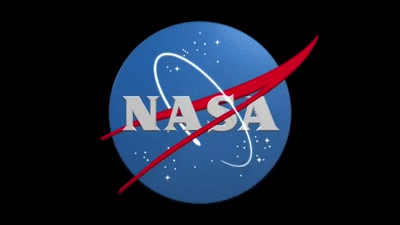
But, we’ve also had other insignia that represented our organization throughout the years.
The “worm” logo (below) was used by the agency from 1975 until 1992. The organization wanted to create a more “modern” logo, which resulted in the unique type style of the “worm” logo.

Even though this logo was retired in 1992, the Graphics Standards Manual is still available online HERE.
You can also read up about the emblems, logos and insignia used by NASA throughout the years in a new e-Book available for free HERE.
Make sure to follow us on Tumblr for your regular dose of space:http://nasa.tumblr.com










How to stabilize a wobbly table?
You are in a restaurant and you find that your table wobbles. What do you do? Most people either put up with it, or they attempt to correct the problem by pushing a folded table napkin under one of the legs. But mathematicians can go one better. A couple of years ago, four mathematicians published a research paper in which they proved that if you rotate the table about its center, you will always find an orientation where the table is perfectly stable.
This problem - as a math problem - has been around since the 1960s, when a British mathematician called Roger Fenn first formulated it. In 1973, the famous math columnist Martin Gardner wrote about the problem in his Scientific American column, presenting a short, clever, intuitive argument to show how rotation will always stop the wobble. Here is that argument.
This only works for a table with equal legs, where the wobble is caused by an uneven floor. However uneven the floor, a table will always rest on at least three legs, even if one leg is in the air. Suppose the four corners are labeled A, B, C, D going clockwise round the table, and that leg A is in the air. If the floor were made of, say, sand, and you were to push down on legs A and B, leaving C and D fixed, then you could bring A into contact with the floor, but leg B would now extend into the sand. Okay so far?
Here comes the clever part. Since all four legs are equal, instead of pushing down on one side of the table, you could rotate the table clockwise through 90 degrees, keeping legs B, C and D flat on the ground, so that it ends up in the same position as when you pushed it down, except it would now be leg A that is pushed into the sand and legs B, C, and D are all resting on the floor. Since leg A begins in the air and ends up beneath the surface, while legs B, C, and D remain flat on the floor, at some point in the rotation leg A must have first come into contact with the ground. When it does, you have eliminated the wobble.The result follows from the Intermediate Value Theorem (Proof).
For more - VIDEO: Fix a Wobbly Table (with Math) by Numberphile.
Consider an interval I = [a, b] in the real numbers ℝ and a continuous function f : I → ℝ. Then, Version I. if u is a number between f(a) and f(b), f(a) < u < f(b) (or f(a) > u > f(b) ), then there is a c ∈ (a, b) such that f(c) = u.

This argument seems convincing, but making it mathematically precise turned out to be fairly hard. In fact, it took over 30 years to figure it out. The solution, presented in the paper Mathematical Table Turning Revisited, by Bill Baritompa, Rainer Loewen, Burkard Polster, and Marty Ross, is available online at Mathematical table turning revisited 19, Nov 2005, http://Arxiv.org/abs/math/0511490
The result follows from the Intermediate Value Theorem. But getting it to work proved much harder than some other equally cute, real-world applications of the IVT, such as the fact that at any moment in time, there is always at least one location on the earth’s surface where the temperature is exactly the same as at the location diametrically opposite on the other side of the globe. As the authors of the 2005 solution paper observe, “for arbitrary continuous ground functions, it appears just about impossible to turn [the] intuitive argument into a rigorous proof. In particular, it seems very difficult to suitably model the rotating action, so that the vertical distance of the hovering vertices depends continuously upon the rotation angle, and such that we can always be sure to finish in the end position.” The new proof works provided the ground never tilts more than 35 degrees. (If it did, your wine glass would probably fall over and the pasta would slide off your plate, so in practice this is not much of a limitation.) Is the theorem any use? Or is it one of those cases where the result might be unimportant but the math used to solve it has other, important applications?…… “I have to say that, other than the importance of the IVT itself, I can’t see any application other than fixing wobbly tables. Though I guess it does demonstrate that mathematicians do know their tables”- Mathematician Keith Devlin.
[SOURCE - MAA.org, K. Devlin, Feb. 2007]
[PDF] On the stability of four legged tables, A. Martin, 15 Aug. 2006: Proving that a perfect square table with four legs , place on continuous irregular ground with a local slope of at most 14.4 degrees and later 35 degrees, can be put into equilibrium on the ground by a “rotation” of less than 90 degrees. And Discussing the case of non-square tables and make the conjecture that equilibrium can be found if the four feet lie on a circle.
Also, I think we can add an actual argument: “The table would be stability (not wobble) if their four legs contact the ground - not necessarily that they have lie on the same flat surface ”, then everything will be easier to approach the problem that the authors wrote.







Geometry and symmetry in plants, part 2
See the full thread here


Islamic Art
Most everyone is familiar with geometry and patterns. The above image by Richard Henry is included here to give some mathematical frame of reference. The artistic emphasis of these ideas gained prominence due to certain religious rules in Islamic religious texts forbidding the portrayal of human forms in worship. Additionally, the advanced mathematical discoveries in the middle east brought about some wonder toward the patterns of these ideas. The underlying message in such geometries, within the Islamic context, is the infinite and natural power of God. It is important to note that ideas like zero, our decimal counting system, and algebra originated from India and the middle east. Arabic calligraphy is also similarly celebrated and made the subject of many past and current Islamic art.



Engineers are preparing to test the parachute system for NASA’s Orion spacecraft at the U.S. Army Yuma Proving Ground in Yuma, Arizona. During the test, planned for Wednesday, Aug. 26, a C-17 aircraft will carry a representative Orion capsule to 35,000 feet in altitude and then drop it from its cargo bay. Engineers will test a scenario in which one of Orion’s two drogue parachutes, used to stabilize it in the air, does not deploy, and one of its three main parachutes, used to slow the capsule during the final stage of descent, also does not deploy. The risky test will provide data engineers will use as they gear up to qualify Orion’s parachutes for missions with astronauts. On Aug. 24, a C-17 was loaded with the test version of Orion, which has a similar mass and interfaces with the parachutes as the Orion being developed for deep space missions but is shorter on top to fit inside the aircraft.

The launch of a space shuttle from high above.

